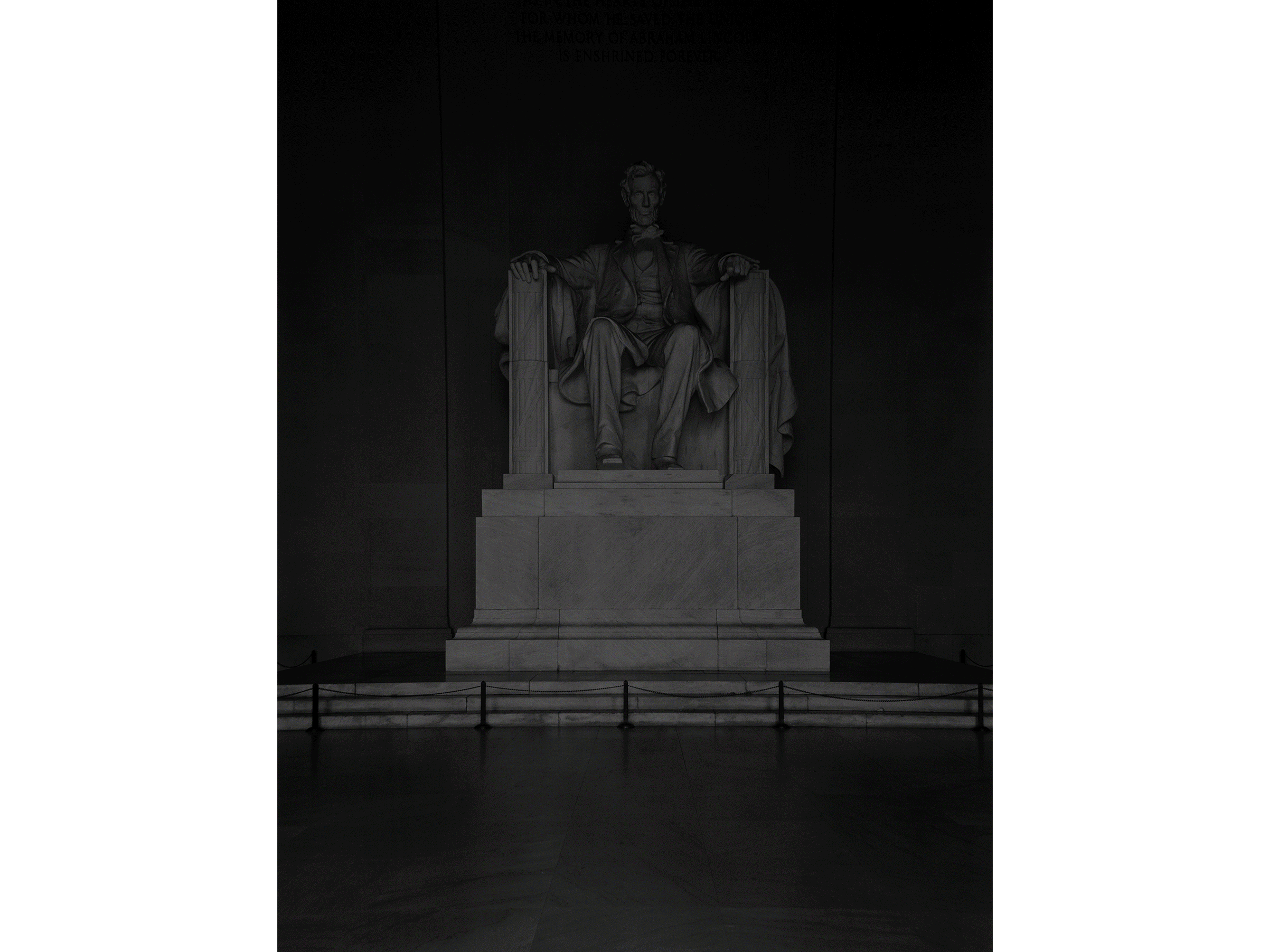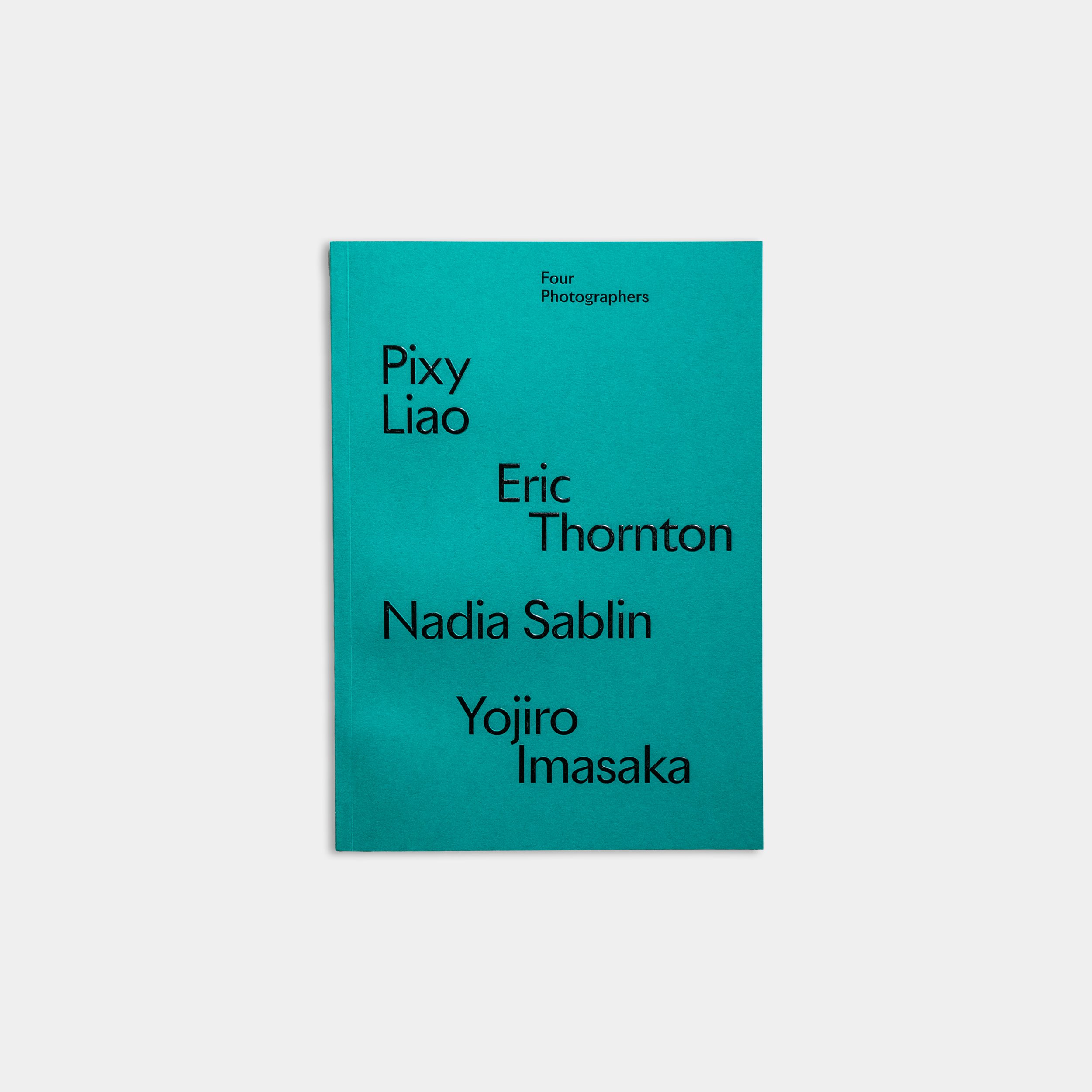TOP | EXHIBITION VIEW | ERIC THORNTON | PIXY LIAO | NADIA SABLIN | YOJIRO IMASAKA
HOME > EXHIBITIONS > FOUR PHOTOGRAPHERS
Four Photographers
Yojiro Imasaka,
Pixy Liao,
Nadia Sablin,
and Eric Thornton
Curated by Yojiro Imasaka
September 7 – October 22, 2023
Opening Reception:
Thursday, September 7, 6–8pm
Click here for RSVP
Supported by
A group show is a delicate organism. It is the curator’s responsibility to find linkages - explicit or not - between artists who often have disparate practices. This requires great sensitivity but also a sense of storytelling. A good group show functions in some ways like a book. It has a sense of forward motion, of thematic confidence, of build-up and resolution.
In this exhibition, Four Photographers, we see curator and photographer Yojiro Imasaka choosing artists who might seem, at first glance, to be concerned with entirely different aesthetic issues. But as the show coheres, we sense the commonality in the various work.
Here we encounter issues of identity, mostly, but also subtle nods at freedom, protest, gender, and more. What we are reminded of, mainly, in Four Photographers, is how completely the personal can become not just political but also universal. Each of us walks the world as a human camera. The artists in this show, we realize, simply have the determination to act on the urge to transpose the private into the public - and with powerful results.
The World Surrounding Us
– By Yojiro Imasaka
The four artists in this exhibition are all from the same generation as me and are based in New York. Though on the surface they are quite different from each other, there is a commonality in their work in that they all express important messages based on their own experience through the medium of photography. The world surrounding us is changing rapidly with the passage of time, but issues of culture, society, politics, and the environment remain major concerns in life, regardless of era. These are evergreen topics for art, and the artists in this show grapple with these things in various ways.
Through her photographs, Pixy Liao asks questions about the concept of gender and the social roles it plays as filtered through her own life and cultural background. At first glance, these self-portrait works made with her partner Moro appear to simply be documenting their relationship. However, viewers may realize there is a sense of incongruity in the work. I believe this signals a glimpse into our own latent awareness of gender roles - and the dangers inherent in values that change with the times. Changes in this realm can come with feeling of ambiguity and opacity, and Liao’s work highlights those elements.
In talking about Eric Thornton’s work, it may be easiest to describe my relationship with him. I am an immigrant from Japan, and Eric is one of the Americans I have spent the most time with. I believe his openness to diversity has much to do with the fact that he was born and raised in New York, a city that is a microcosm of the world. And so, for him, it seems quite natural to have a strong resentment over the division of people caused by differences in political thought, religion, or race. Participating in numerous protests such as Black Lives Matter and documenting them, his series of works strongly impresses with the contemporaneity of photography by adding pictorial elements to the power of documentation.
In Nadia Sablin’s work, the sense of interplay between distance from and familiarity with the subject is indispensable. Born in Russia and raised in the United States, Nadia has been visiting her country of birth every year since her late twenties. In her eyes, the village where she spent her childhood summers is representative of the social and political realities across rural Russia. She focuses on the scenery and everyday life there, constructing a narrative that’s richer and more complex than the media-made perspective of Eastern and Western countries. Viewers might be surprised at how far our perceptions of Russia are divorced from the reality that is reflected in these images.
Roughly 200 years have passed since the birth of photography, but with the advent of digital devices such as digital cameras and smartphones, the idea of photography morphed from something you examine thoughtfully to something you swipe past in the pursuit of quick gratification. It is no longer possible to hold people’s attention on a single image for more than a few seconds. The mass media is flooded with photographic images as if pushed by the trend of mass consumption society, and it seems that people are reacting only to the surface. Because most of them are overly processed images, they become unnaturally homogenous, and there is a danger that even our thoughts will change unconsciously. Photography is this powerful.
The artists exhibited here use the medium of photography to ask big questions. Naturally, these works are different from the photographic images that are intended to be consumed in our daily lives (I hope), and fully contain the artist’s own story in a single photograph. Now that the medium of photography has become more familiar in modern society, I ask you to face these images one by one and decipher the stories and contexts behind them. This is because I believe that each and every one of them is not something that can be swiped, but rather a mirror for those of us who live in the same era, and an opportunity to rediscover how we view modern society.
EXHIBITION VIEW





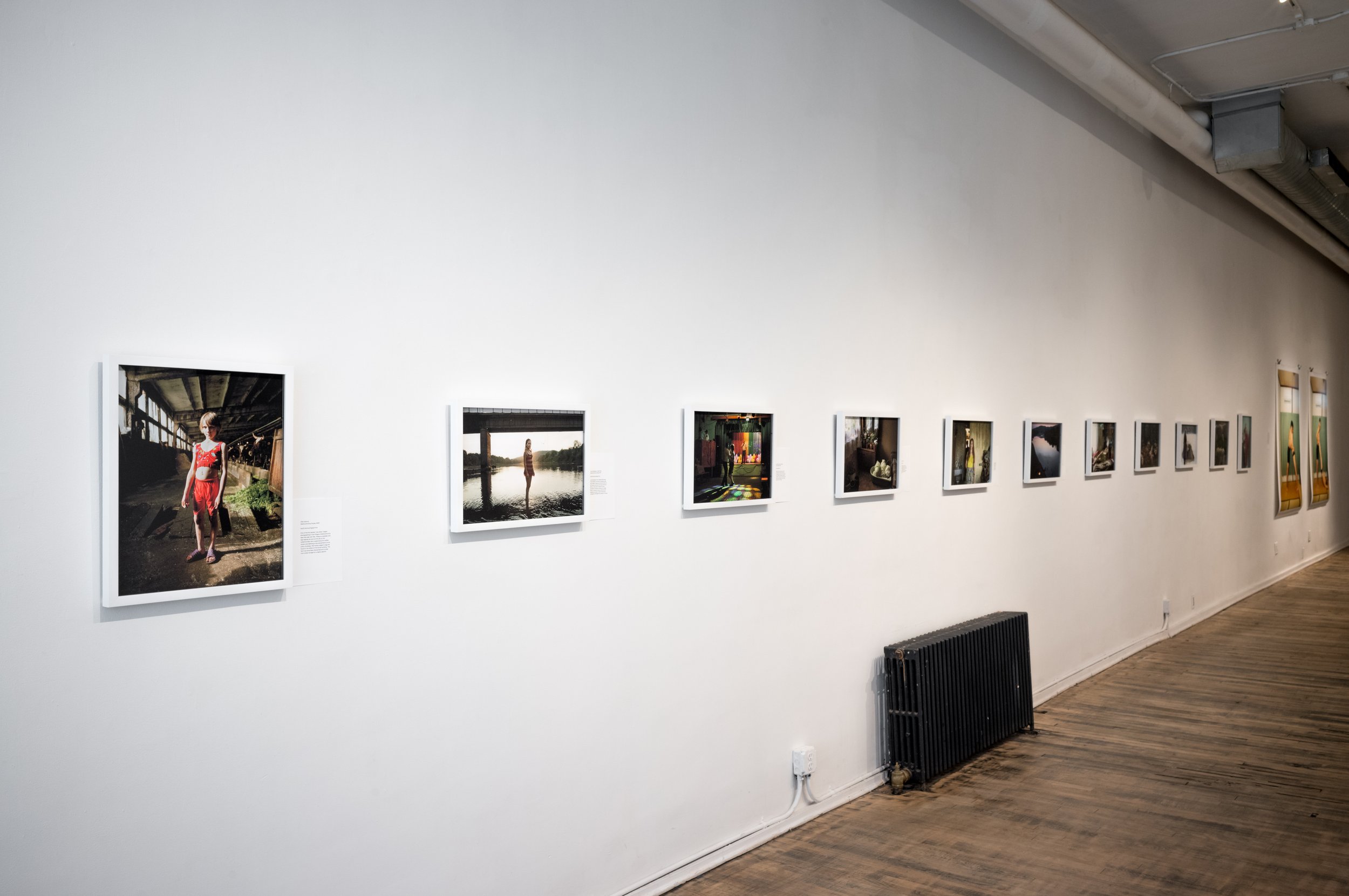



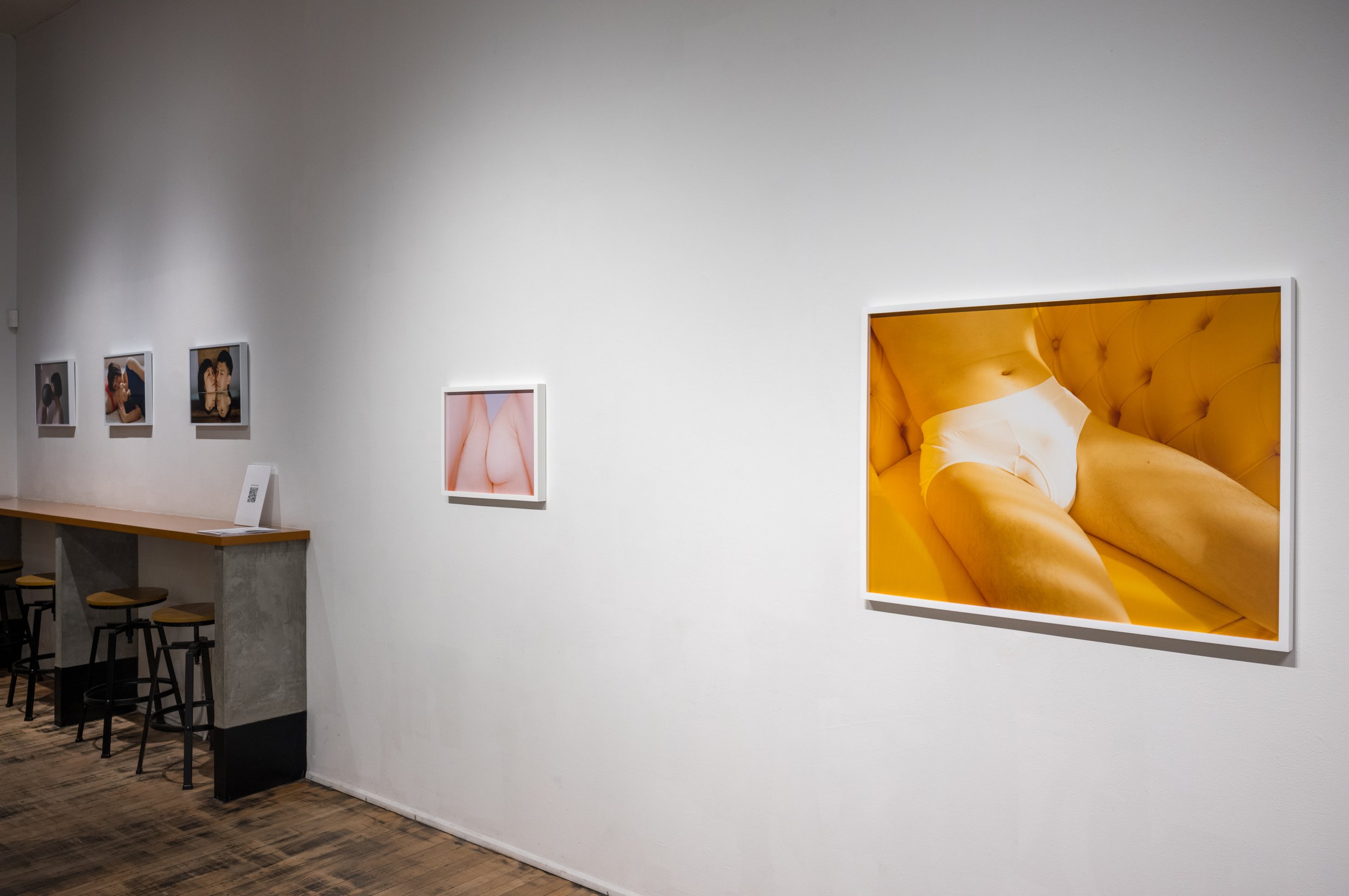

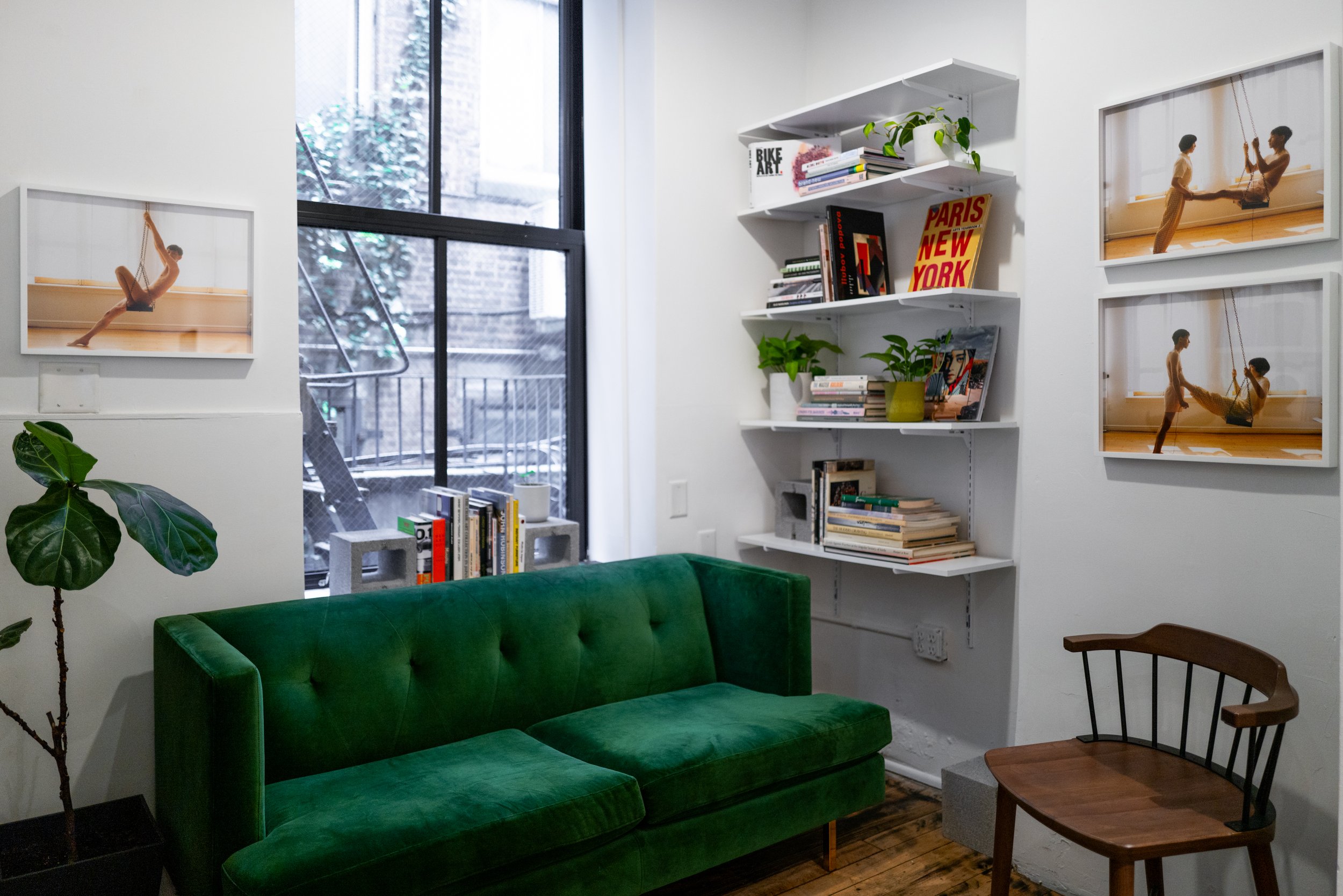
Eric Thornton
Eric Thornton is a person and artist living and working in the social landscape. In addition to his large-scale analog photographic works, Eric is the founder of Brooklyn, NYC-based Goodness + Truth Studio, making fine-art portraits in the collodion wet-plate process. Eric also enjoys fabrication and design in other mediums, including wood and plastics. He has exhibited at ZonaMaco (2019/20), with Wallplay (2020), New Orleans Photo Alliance (2022) at “B” Dry Goods (2023) and has collaborated recently with The Other Art Fair, Peninsula Art Space, Pioneer Works, The Rockaway Film Festival, and Please Space Studios.
LINCOLN MEMORIAL
2015, Gelatin silver print
66 x 46 inches
INTERVIEW
SOCIAL LANDSCAPE
– An interview with Eric Thornton
How important has protest culture been to your artistic practice?
The two protest photographs in this selection are actually not typical of my work. My landscapes almost never show people. I consider all my work to be social landscape, which is to say that I am interested in how space is and has been affected, used, and shaped by humanity. The social history of a space is reflected on its every surface, and the camera is the most effective tool to interrogate that with.
What does the Lincoln Memorial represent to you?
Of and for whom monuments are built says a lot about a society. This is a very famous monument here in the United States because of what Lincoln represents in the narrative of this country - much of which is based on historical revisionism and omission. The photograph came to me as a vision in the midst of so-called “government shutdowns” surrounding the DACA controversy, and is the sole image I made on a 2018 visit to Washington, DC,. This was somewhat early in the Trump presidency and it seemed clear that we had given up even paying lip service to the principles of leadership and morality represented by the Lincoln ideal.
Pixy Liao
Born and raised in Shanghai, Pixy Liao is a Chinese artist residing in New York. Her long-term photo project Experimental Relationship challenges conventional ideas of gender dynamics. She also explores female identity in video and sculpture. She has participated in exhibitions internationally, including at the Fotografiska, Rencontres d’Arles in Arles, Asia Society, and the National Gallery of Australia.
NIPPLE KISS
2013, Digital C-print,
30 x 40 inches
INTERVIEW
SELF-EXPLORATION
– An interview with Pixy Liao
Please tell me about your feelings regarding gender in your personal life and your art.
When I first started photographing the Experimental Relationship project, I was at a point of self-exploration. Growing up in China, I always had doubts about the stereotypical gender role a woman has in society and family. At the same time, I didn’t really know what the other options were for a woman. Meeting Moro in the US has given me a chance to explore my possibilities of what a woman can be.
How did you first decide to make your partner an element of this body of work? What does he think of this?
I used photography as an excuse to get to know my partner Moro. So, photography has always been a part of our relationship. That offered me a chance to be a different type of woman. Our relationship led me into this project. He thinks the photos are part of our life. It’s something that we do together.
Who are some of your photographic inspirations?
My inspiration comes from living with Moro and everyday life. As for photographers, my photo idol is the Finnish photographer Elina Brotherus. I also admire Jimmy DeSana, Jo Ann Callis, Guy Bourdin, Gilbert Carcin, and Philip Lorca diCorcia’s works.
Nadia Sablin
Nadia Sablin is a photographer whose work explores the larger world through intimately observed narratives combining memory, fact, and myth. She is a 2018 Guggenheim Fellow, the winner of the Center for Documentary Studies Honickman Prize and a NYFA Fellow in Photography. Her books have been published by Duke University Press and Dewi Lewis Publishing. She teaches at SUNY New Paltz.
LIZA VYSOTSKAYA ON EPIPHANY
ALEKHOVSHCHINA, RUSSIA
2019, Archival digital print,
13 x 20 inches
INTERVIEW
A DEEP CONNECTION
– An interview with Nadia Sablin
What is the most common misconception Americans have regarding Russia?
It depends on what type of media the person has consumed. My partner, who is American, grew up watching Bond films in which sexy Russian villainesses speak with hard “R”s. One of my American cousins read Tolstoy and Dostoyevsky, believing in the “mysterious Russian soul” with a dash of orientalism. I know that when we think about others as groups, we tend to simplify and erase nuance, especially if the other is distant and in an adversarial position.
Does making photographs about Russia coincide with your sense of identity?
Making photographs of Russia reminds me of the childhood I spent there. I’ve loved many people there and have a deep connection to the land. As a Jewish person, I wasn’t really considered “Russian” until I arrived in the U.S. as a refugee from an antisemitic country. I don’t know if I should claim that identity, although I am still a citizen of Russia, as well as of the United States. My home is in New York. My family is here, my job is here, my friends are here. But my heart aches for the forests and rivers I’ve captured in my photographs.
Yojiro Imasaka
Yojiro Imasaka was born in 1983 in Hiroshima, Japan and relocated to the United States in 2007. He currently lives and works in Brooklyn, New York. He received a BFA in Photography from Nihon University College of Art Photography Department in Tokyo, Japan in 2007, and an MFA from the Pratt Institute in Brooklyn, New York in 2010.
WET LAND #60
2022, Toned gelatin silver print
17 3/4 x 22 inches
INTERVIEW
A PERFECT BALANCE
– An interview with Yojiro Imasaka
When did the idea for this group show first coalesce for you? How easy or hard was it to choose the photographers in it?
It was very easy to choose the artists, because their names are always in my mind as photographers I admire. So, when the gallery first suggested that I curate a group show, my decision was made very quickly.
How does your curatorial work differ from your artistic practice? How is it similar?
Curatorial work is similar to the way I approach my own artistic practice because it also involves brainstorming, sequencing, organizing, and delivering meaningful artwork to viewers. The difference is now I know how galleries feel working with different artists.
What do you consider the primary responsibilities of a curator?
As a curator, I consider a perfect balance between all the artists. My main goal is to have the viewers not only enjoy the artwork but to be inspired by what they see. I also think it’s important to present artwork on topics that should be spoken about.
How does the process of deciding the order of the show’s hanging work for you? Do you find it also to be a creative act?
It involves me strategizing how the viewer should start the exhibition and how they should end. I spend a lot of time with the artist’s images, and they speak to me in a way. I then decide the flow that I want for the show.
Relative Contents
Shop
Four Photographers
Pixy Liao, Eric Thornton,
Nadia Sablin, Yojiro Imasaka
$30.00
Pixy Liao x NowHere Original Tote Bag
Pixy Liao
Shop
$100.00

